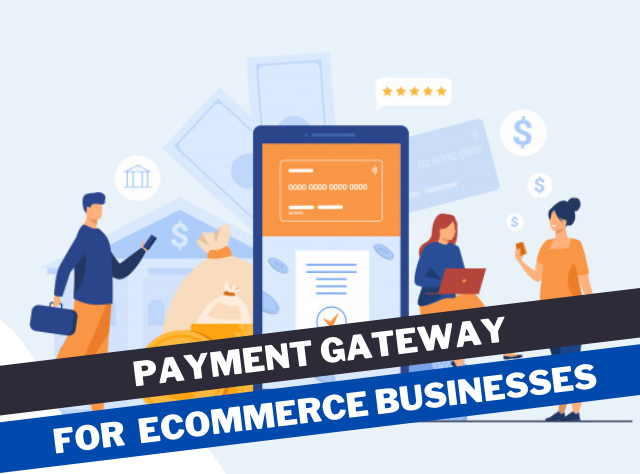A payment gateway system is one of the most critical tools of the trade for modern business; especially e-Commerce stores that sell goods and services online. Without a payment gateway in place, the whole point of running an online store hits a roadblock if they can’t accept online payments. So, for small business owners who may be thinking of starting their very own eCommerce site, it’s important to understand this technology and how it can help spearhead your business in the right direction.
What is a Payment Gateway System?
A payment gateway system acts as a communication line between the merchant, the customer, and the network of the acquiring and receiving bank. By helping create a secure channel between various parties, it helps them communicate and approve or decline transactions so that online dealings can take place. All information shared across this network is encrypted so that the information can’t be read by anyone apart from the authorized parties.
How Does a Payment Gateway Work?
All payment gateway providers systems work in a standardized way to make the entire process seamless and secure. The process is as follows;
- The customer selects a product or service and initiates a transaction by hitting the ‘Buy Now’ button or any other equivalent on the website.
- The customer is redirected to the payment gateway where their financial information is logged.
- The payment gateway redirects the customer to a secure page for authorization.
- Once approved, the customer’s bank initiates a check and verifies the account to check funds available.
- The status of the transaction whether approved or disapproved is shared by the bank to the payment gateway and then relayed to the customer.
- On successful verification, the bank shares the information with the payment gateway and settles the payment.
- The payment is then settled with the merchant completing the transaction.
Now that we have a fair understanding of what a payment gateway means and how it functions. Let’s look at a few points that will help you understand how you can benefit from having one integrated into your e-Commerce site.
Seamless Transactions Across All Digital Modes of Payment
Payment gateway providers can handle almost all kinds of digital payment modes including credit/debit cards, UPI transactions, digital wallets, net banking, and even prepaid cards. That means that no matter what the customer’s preferred mode of payment might be, the system can easily accommodate all kinds of payment methods which reduces the risk of cart abandonment and increases overall sales.
Lowered Instances of Cart Abandonment
One of the primary reasons for cart abandonment is failed payments. Payment providers with a great reputation have a 99% uptime which reduces the risk of a payment not going through. Moreover, since payment gateways can handle multiple high-value transactions all at once, there is little to no risk of a server breakdown. So, ideally as a business owner, you should only go with the best if you want the maximum out of your payment provider.
Secure Transactions
Every transaction taking place over a payment gateway complies with industry standards like PCI-DSS, 3D secure, etc. Moreover, SSL encryption ensures that only authorized parties can read the data. Since the data is tokenized, it’s very hard to decrypt what’s being shared; thereby significantly reducing the risk of a fraudster getting their hands on financially sensitive client data.
Accept Multiple Currency Types
Your payment provider can help you accept multiple types of currencies from across the world. This allows you to sell goods and services across a larger clientele spread all over the world. Therefore, if your business is domestic, however, and you plan to expand beyond your home country, having a payment gateway becomes more crucial.
Helps You Track Finances
Manually calculating finances is a tedious task requiring a lot of time and effort, and even then, it is prone to human errors. A payment gateway, on the other hand, automates the entire process of keeping a track of all incoming and outgoing transactions with no margin for error. This helps businesses save a significant amount of money that would otherwise be spent on hiring additional staff to handle physical currency, count, and store that money. Business owners can simply use a centralized dashboard to access all of the information from one place making everything more organized and sorted.
Offer Customized Deals and Offers
Customers love being pampered, and the best way to show them that the business cares about their patronage is by sending them customized deals and offers. Since all transactions including date and time can be tracked at an individual level; business owners can figure out frequent shoppers and send them special deals and offer via timed notifications. Moreover, EMI offers can also be extended for high-value items to customers who have shown a willingness to buy the product but didn’t complete the transaction. This offers a great way of engaging with customers and making them feel special.
Customized Checkout Experience
Some payment gateway providers may offer you the option of customizing the checkout page with your brand’s colors, fonts, logo, etc. This is a great opportunity to stand out from the competition and give your customers a branded checkout page whenever they shop. This eventually leads to the top-of-mind recall value which is great for businesses that want to retain and acquire more customers.
Payment providers offer many advantages that can’t be ignored in this day and age where customers want a faster checkout experience along with better service. Therefore, it’s become more important than ever to partner with a payment provider that can help you show your business in a brand-new light to your customers. Businesses can reap all of the benefits that come with keeping customers happy, such as increased sales and more word of mouth for the brand!
